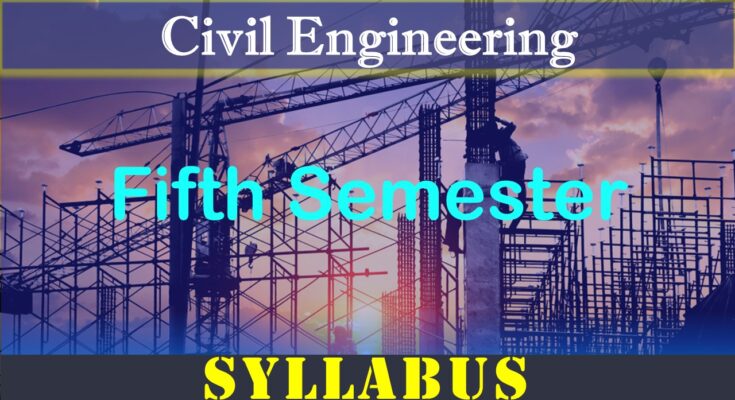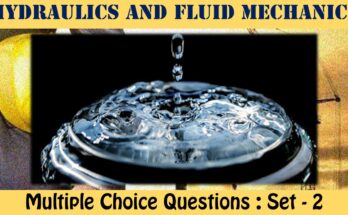Syllabus B Tech Civil Fifth Semester Fluid Mechanics I CE501
The concepts developed in this course will aid in quantification of several concepts in Civil Engineering that have been introduced at the Engineering courses. Technology is being increasingly based on the latest Syllabus B Tech Civil Fifth Semester Fluid Mechanics I CE501 is given here.
The objective of this course “Syllabus B Tech Civil Fifth Semester Fluid Mechanics I CE501“ is to develop ability and gain insight into the process of problem-solving, with emphasis on thermodynamics. Specially in following manner: Apply conservation principles (mass and energy) to evaluate the performance of simple engineering systems and cycles. Evaluate thermodynamic properties of simple homogeneous substances. Analyze processes and cycles using the second law of thermodynamics to determine maximum efficiency and performance. Discuss the physical relevance of the numerical values for the solutions to specific engineering problems and the physical relevance of the problems in general and Critically evaluate the validity of the numerical solutions for specific engineering problems. More precisely, the objectives are:
- To enable young technocrats to acquire mathematical knowledge to understand Laplace transformation, Inverse Laplace transformation and Fourier Transform which are used in various branches of engineering.
- To introduce effective mathematical tools for the Numerical Solutions algebraic and transcendental equations.
- To acquaint the student with mathematical tools available in Statistics needed in various field of science and engineering.
CE 501 – Fluid Mechanics I
Practical List
1. To determine the local point pressure with the help of pitot tube.
2. To find out the terminal velocity of a spherical body in water.
3. Calibration of Venturimeter
4. Determination of Cc, Cv, Cd of Orifices
5. Calibration of Orifice Meter
6. Calibration of Nozzle meter and Mouth Piece
7. Reynolds experiment for demonstration of stream lines & turbulent flow
8. Determination of metacentric height
9. Determination of Friction Factor of a pipe
10. To study the characteristics of a centrifugal pump.
11. Verification of Impulse momentum principle.
Books Recommended
1. Modi & Seth; Fluid Mechanics; Standard Book House, Delhi
2. Som and Biswas; Fluid Mechnics and machinery; TMH
3. Engg fluid mech. – By Grade & Miraj gaonkar , Nem Chand & Bros. Prakashan
4. White ; Fluid Mechanics ; TMH
5. Essential of Engg Hyd. By JNIK DAKE; Afrikan Network & Sc Instt. (ANSTI)
6. A Text Book of fluid Mech. for Engg. Student by Franiss JRD
7. R Mohanty; Fluid Mechanics By; PHI
8. Fluid Mechanics; Gupta Pearson.




